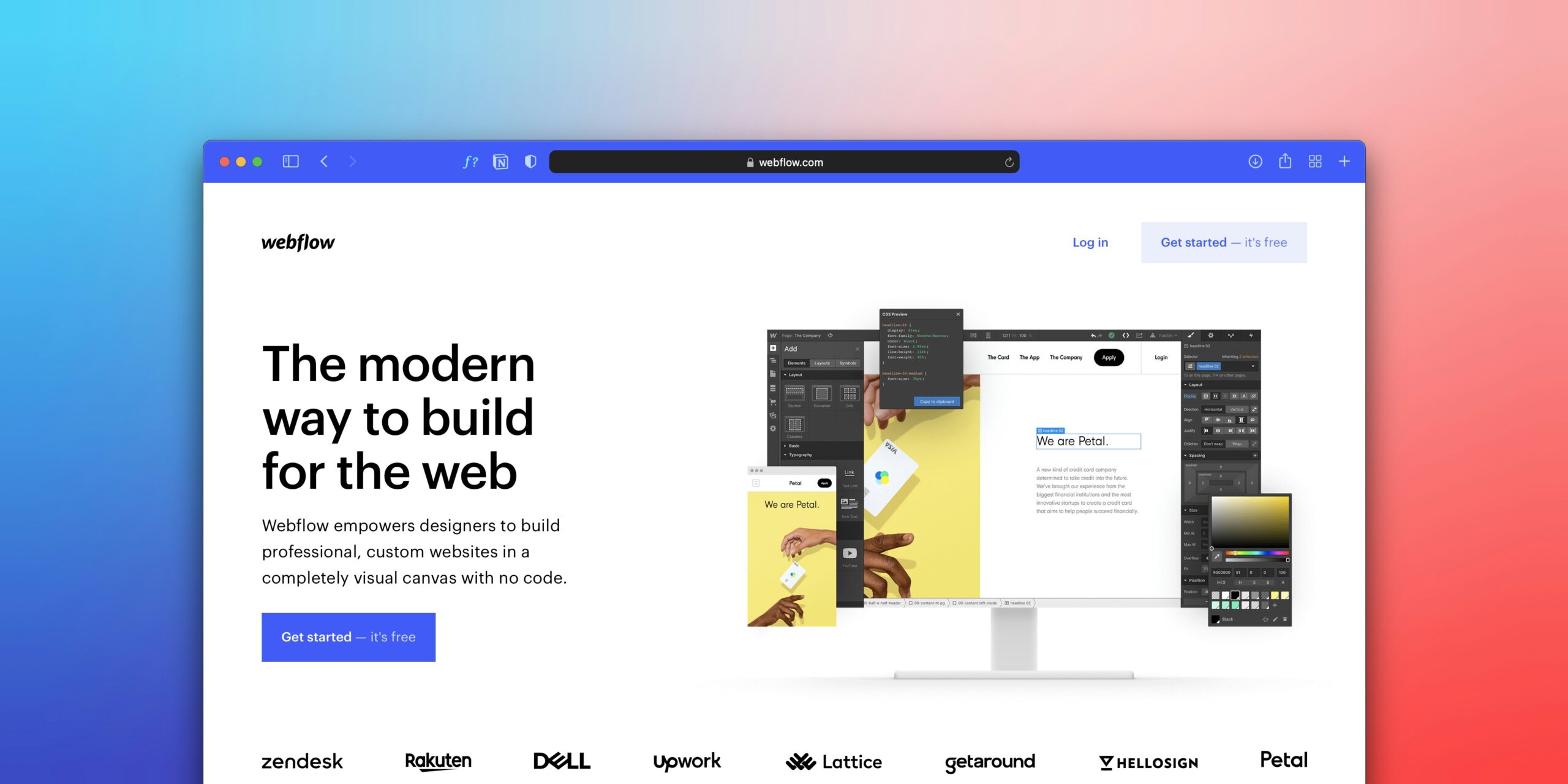Webflow is an excellent platform for visually appealing and responsive websites without coding. However, while it offers powerful tools and flexibility, it’s easy to make mistakes when you’re new to the platform or even when you’re experienced. In this blog post, we’ll cover the top five mistakes to avoid when using Webflow and tips on domain names and web hosting to help set you up for success.
Neglecting to Choose the Right Domain Name
Choosing the right domain name is one of the first and most crucial steps in setting up a website. Your domain name is your website’s online address, which plays a significant role in your brand’s identity. Your domain name affects how easily people can find your website, how memorable it is, and even how well it ranks in search engines. A poor choice can make your site look unprofessional or be challenging for users to remember and share.
Tips for Choosing a Domain Name:
- Keep it Short and Memorable: Shorter domain names are easier to remember and less prone to typing errors. Aim for simplicity and clarity.
- Use Relevant Keywords: Include words that reflect your website or business’s purpose. For example, a domain like “coffeeworld.com” is clear and relevant if you sell coffee.
- Make it Easy to Type: Avoid using special characters, numbers, or complex spellings. Simple and straightforward domain names are more accessible for users to type correctly.
- Consider Extensions: While “.com” is the most common and generally preferred, other extensions like “.net” or “.org” might be more suitable depending on your website’s focus or the availability of your desired name.
Selecting the Wrong Web Hosting Service
Web hosting is like the home for your website’s files. It’s where all your website’s data lives, and it’s crucial for ensuring your site is accessible online. Choosing the wrong hosting service can lead to slow load times, frequent downtime, or even lost data. Your hosting service impacts your site’s performance, security, and reliability.
Tips for Choosing a Web Hosting Service:
- Consider the Price: Different hosting plans come with different prices, so choose one that fits your budget while meeting your website’s needs.
- Check the Storage Space: The amount of storage you need depends on your site’s size and complexity. Make sure the hosting service offers enough space for your content.
- Look at Bandwidth: Bandwidth determines how much data can be transferred from your site to visitors’ devices. If you expect heavy traffic, choose a plan with higher bandwidth.
- Ease of Use: A user-friendly control panel is essential for managing your website efficiently, especially if you need to be tech-savvy.
Customer Support: Good customer support is crucial for resolving issues quickly. Ensure the hosting service offers reliable support, especially if you run a business website.
Overcomplicating the Design
Webflow offers excellent design flexibility, which is great, but it can also lead to overcomplicated and cluttered designs. Simple, clean designs perform better and offer a better user experience. Overloading your site with too many elements can confuse visitors and slow down your website.
Tips for Keeping Design Simple:
- Focus on Clarity: Make sure your site’s purpose is clear. Avoid overloading pages with unnecessary elements or information.
- Prioritize User Experience: Design your site with the user in mind. Ensure it’s easy to navigate and the critical information or calls to action are prominent and clear.
- Use White Space: Don’t be afraid of white space. It helps separate different elements, making your content easier to read and understand.
Not Optimizing for Mobile
With more and more people browsing the web on their mobile devices, ensuring your website looks and functions well on smaller screens is crucial. A site that isn’t optimized for mobile can be hard to navigate, slow to load, or not function correctly, leading to a poor user experience and potentially losing visitors or customers.
Tips for Mobile Optimization:
- Use Responsive Design: Webflow offers tools for creating responsive designs that adjust based on the screen size. Make sure your design works well on both desktop and mobile.
- Test on Different Devices: Test your site on various devices to see how it looks and functions. This helps identify any issues or areas for improvement.
- Simplify for Mobile: Consider what elements are essential on mobile and what can be removed or adjusted to improve the mobile experience.
Ignoring SEO Best Practices
Ignoring SEO (Search Engine Optimization), best practices can make it difficult for search engines to find and index your website, which means fewer people will discover your site through organic search. Good SEO practices improve your website’s visibility in search engines, driving more organic traffic.
SEO tips:
- Use Clear Titles and Meta Descriptions: Ensure each page on your site has a clear, descriptive title and meta description that reflect the content.
- Include Relevant Keywords: Incorporate relevant keywords naturally into your content, titles, and meta descriptions to help search engines understand your site’s focus.
- Optimize Images: Use descriptive file names and alt text for images. This helps search engines understand the pictures and improves accessibility.
You can use a tool like Semrush to boost your SEO strategy. Semrush offers to improve website visibility and search engine ranking, a complete set of digital marketing tools and helps support a wide range of marketing activities beyond SEO.

Starting from $10.83/month (yearly)
14 Days Free-Trial
Key Features
Extensive SEO toolkit with analytics and reporting.
Keyword research, site audit, and competitor analysis tools.
Content marketing and social media management features.
Why We Recommend It
Provides a comprehensive set of tools for digital marketing.
It helps improve website visibility and search engine ranking.
Supports a wide range of marketing activities beyond SEO.
Pros & Cons
- Very detailed and comprehensive data
- Regular updates with new features and improved capabilities
- Integrates with other digital marketing tools and platforms
- It can be overwhelming for beginners
- High subscription cost for advanced features
Conclusion
Webflow is a powerful tool for building websites, but mistakes are easy to make if you’re not careful. By avoiding these top five mistakes—choosing a poor domain name, selecting the wrong hosting, overcomplicating design, ignoring mobile optimization, and neglecting SEO—you can set yourself up for success and create a website that looks great and performs well.





